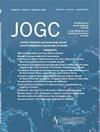指南345:原发性痛经
IF 2
Q2 OBSTETRICS & GYNECOLOGY
引用次数: 0
摘要
目的综述原发性痛经的调查与治疗。目标人群:经历经期疼痛但尚未确定根本原因的个体。益处、危害和成本原发性痛经很常见,而且经常得不到充分治疗,尽管有效的治疗方法以最低的成本广泛可用。原发性痛经的治疗有可能改善生活质量,减少离开学校或工作的时间。证据:通过搜索“痛经”和“经期疼痛”,检索PubMed和Cochrane数据库中已发表的临床试验、随机对照试验、观察性研究、人口研究和系统综述文章。本次检索建立在之前的综述(2005年1月至2016年3月)的基础上,包括2016年3月至2024年12月之间的新文献。验证方法作者使用分级建议评估、发展和评价(GRADE)方法对证据质量和建议强度进行评级。参见在线附录A(表A1为定义,表A2为强建议和条件[弱]建议的解释)。目标受众:初级保健提供者,儿科医生,产科医生/妇科医生。尽管女性和青少年普遍经历月经疼痛,但它往往得不到充分治疗或被不公平地忽视。如果不及时治疗,持续的经期疼痛可能发展成慢性疼痛综合征。治疗包括非甾体抗炎药和激素避孕药,不需要盆腔检查;在没有明确诊断之前,不应延迟治疗。有效的治疗方法是可用的,不需要盆腔检查或侵入性手术。摘要STATEMENTS1。痛经非常普遍,但通常治疗不足(低)。与原发性痛经相关的危险因素包括年龄、吸烟、饮酒、饮食、身体活动水平、家族史、胎次和心理社会因素(高)。原发性痛经是痛经前后开始的痉挛、耻骨上疼痛,血流量最大时达到高峰,持续2至3天;常见症状包括恶心、呕吐、腹泻、头痛、头晕和疲劳(高)。MRI在诊断深部子宫内膜异位症和子宫腺肌症时很有价值,但在检测浅表性子宫内膜异位症时效果较差,浅表性子宫内膜异位症常见于腹腔镜检查;腹腔镜检查仍然是诊断子宫内膜异位症的金标准,特别是当怀疑浅表腹膜病变时(良好的实践点)。非甾体抗炎药比安慰剂更有效,但有更多的胃肠道副作用。所有目前可用的非甾体抗炎药的疗效和安全性相当(高)。大多数妇女通过药物治疗,特别是经闭经治疗,症状得到缓解。子宫内膜消融有可能减轻原发性痛经的症状,当它发生在大量月经出血时(高)。应获得完整的月经、疼痛和妇科病史,包括症状发作、严重程度和对既往治疗的反应。(很好的练习点)2 .卫生保健提供者应考虑对常规治疗无效和怀疑器质性病理的患者进行盆腔检查(良好做法要点)。卫生保健提供者可以在不首先进行盆腔检查的情况下开始治疗(良好实践点)。4 .当经适当治疗后症状仍然存在或体检发现临床异常时,应行超声检查(良好做法要点)。当经阴道超声不确定时,或当根据临床表现强烈怀疑子宫内膜深浸润性异位症或子宫腺肌症时,可考虑磁共振成像(MRI)。在评估深度浸润性子宫内膜异位症(有条件,低)时,由经验丰富的超声医师进行高级阴道超声优于MRI。考虑到在许多司法管辖区等待MRI的时间很长,如果经阴道超声检查正常,但临床对子宫内膜异位症的怀疑仍然很高(有条件的,低),则应考虑腹腔镜检查。卫生保健提供者应提供非甾体抗炎药或对乙酰氨基酚,常规给药方案,作为大多数妇女的一线治疗,除非有禁忌(强,高)。推荐持续或长期使用联合激素避孕药治疗痛经(强,高)。原发性和继发性痛经都可能对相同的激素抑制治疗有反应。因此,即使没有做出准确的诊断,医生也应该进行对症治疗(良好实践要点)。 建议经常运动以改善痛经症状(有条件,低)。高频经皮神经电刺激(TENS)、局部热疗法(加热垫/贴片)、穴位刺激和生姜补充可以被认为是痛经的补充治疗,特别是对于不能或选择不使用传统疗法的妇女,尽管证据的强度和确定性各不相同(有条件的,低)。只有当经优化药物治疗后痛经仍然存在或强烈怀疑继发性原因(强烈、中度)时,才应考虑手术干预。全面的临床评估,包括盆腔检查、直肠阴道评估和腹壁肌肉评估,应在考虑手术选择(强、中度)之前进行。本文章由计算机程序翻译,如有差异,请以英文原文为准。
Guideline No. 345: Primary Dysmenorrhea
Objective
This guideline reviews the investigation and treatment of primary dysmenorrhea.
Target Population
Individuals experiencing menstrual pain for which no underlying cause has been identified.
Benefits, Harms, and Costs
Primary dysmenorrhea is common and frequently undertreated, despite effective therapy being widely available at a minimal cost. Treatment of primary dysmenorrhea has the potential to improve quality of life and decrease time away from school or work.
Evidence
Published clinical trials, randomized controlled trials, observational studies, population studies, and systematic review articles indexed in PubMed and the Cochrane database were identified using search the terms “dysmenorrhea” and “menstrual pain.” This search builds on the previous review (January 2005 to March 2016), including new literature between March 2016 and December 2024.
Validation Methods
The author rated the quality of evidence and strength of recommendations using the Grading of Recommendations Assessment, Development and Evaluation (GRADE) approach. See online Appendix A (Tables A1 for definitions and A2 for interpretations of strong and conditional [weak] recommendations).
Intended Audience
Primary care providers, pediatricians, and obstetrician/gynaecologists.
Social Media Abstract
Although menstrual pain is commonly experienced by women and adolescents, it is often undertreated or unfairly dismissed. If left untreated, persistent menstrual pain may develop into a chronic pain syndrome. Treatment includes non-steroidal anti-inflammatory drugs and hormonal contraceptives and can be provided without the need for pelvic examinations; treatment should not be delayed pending a definitive diagnosis. Effective treatments are available and do not require a pelvic examination or invasive procedures.
SUMMARY STATEMENTS
- 1.Dysmenorrhea is highly prevalent and commonly undertreated (low).
- 2.Risk factors associated with primary dysmenorrhea include age, smoking, alcohol use, diet, level of physical activity, family history, parity and psychosocial factors (high).
- 3.Primary dysmenorrhea is crampy, suprapubic pain that begins around menstruation, peaks with maximum blood flow, and lasts 2 to 3 days; common symptoms include nausea, vomiting, diarrhea, headache, dizziness, and fatigue (high).
- 4.MRI is valuable in diagnosing deep endometriosis and adenomyosis but is less effective in detecting superficial endometriosis, which is commonly found during laparoscopy; laparoscopy remains the gold standard for diagnosing endometriosis, particularly when superficial peritoneal lesions are suspected (good practice point).
- 5.Non-steroidal anti-inflammatory drugs are more effective than placebo but have more gastrointestinal side effects. All currently available non-steroidal anti-inflammatory drugs are of comparable efficacy and safety (high).
- 6.Most women experience symptom relief with medical therapy, particularly with amenorrhea-inducing treatments (strong).
- 7.Endometrial ablation is likely to reduce the symptoms of primary dysmenorrhea when it occurs in the presence of heavy menstrual bleeding (high).
RECOMMENDATIONS
- 1.A thorough menstrual, pain, and gynaecologic history should be obtained, including symptom onset, severity, and response to prior treatments. (good practice point).
- 2.Health care providers should consider a pelvic examination in patients who are not responding to conventional therapy and when organic pathology is suspected (good practice point).
- 3.Health care providers may initiate therapy without first performing a pelvic examination (good practice point).
- 4.Ultrasound is indicated when symptoms persist despite appropriate therapy or a clinical abnormality is detected on physical examination (good practice point).
- 5.Magnetic Resonance Imaging (MRI) may be considered when transvaginal ultrasound is inconclusive, or when deep infiltrating endometriosis or adenomyosis is strongly suspected based on clinical presentation (good practice point).
- 6.Advanced transvaginal ultrasound by an experienced sonographer is preferred over MRI for evaluating deep infiltrative endometriosis (conditional, low).
- 7.Given significant wait times for MRI in many jurisdictions, laparoscopy should be considered if transvaginal ultrasound is normal but clinical suspicion for endometriosis remains high (conditional, low).
- 8.Health care providers should offer non-steroidal anti-inflammatory drugs or acetaminophen, administered with regular dosing regimens, as a as first-line treatment for most women unless contraindicated (strong, high).
- 9.Continuous or extended use combined hormonal contraceptives are recommended for the treatment of dysmenorrhea (strong, high).
- 10.Both primary and secondary dysmenorrhea are likely to respond to the same hormonal suppression therapy. Therefore, the practitioner should institute symptomatic treatment even though a precise diagnosis has not been made (good practice point).
- 11.Regular exercise should be recommended to improve the symptoms of dysmenorrhea (conditional, low).
- 12.High-frequency transcutaneous electrical nerve stimulation (TENS), local heat therapy (heated pads/patches), acupoint stimulation and ginger supplementation may be considered as complementary treatments for dysmenorrhea, especially for women who cannot or choose not to use conventional therapy, though evidence varies in strength and certainty (conditional, low).
- 13.Surgical intervention should only be considered when dysmenorrhea persists despite optimized medical therapy or when secondary causes are strongly suspected (strong, moderate).
- 14.A thorough clinical evaluation, including pelvic examination, rectovaginal assessment, and abdominal wall muscle evaluation, should be performed before considering surgical options (strong, moderate).
求助全文
通过发布文献求助,成功后即可免费获取论文全文。
去求助
来源期刊

Journal of obstetrics and gynaecology Canada
OBSTETRICS & GYNECOLOGY-
CiteScore
3.30
自引率
5.60%
发文量
302
审稿时长
32 days
期刊介绍:
Journal of Obstetrics and Gynaecology Canada (JOGC) is Canada"s peer-reviewed journal of obstetrics, gynaecology, and women"s health. Each monthly issue contains original research articles, reviews, case reports, commentaries, and editorials on all aspects of reproductive health. JOGC is the original publication source of evidence-based clinical guidelines, committee opinions, and policy statements that derive from standing or ad hoc committees of the Society of Obstetricians and Gynaecologists of Canada. JOGC is included in the National Library of Medicine"s MEDLINE database, and abstracts from JOGC are accessible on PubMed.
 求助内容:
求助内容: 应助结果提醒方式:
应助结果提醒方式:


